The 21st century brought in the digital age. Dentistry, as a medical practice and industry, adapted to these changes. The tools used by modern practices shape workflow, reputations, patient satisfaction, and long-term profits.
Tools like intraoral scanners and CAD/CAM technology are now essential for modern restorative, cosmetic, and orthodontic care. As the industry shifts away from traditional dental impressions, selecting a scanner brand is more crucial than ever.
3Shape is a global leader in the development of intraoral scanners and digital impressions for dental technology. They are leading the digital change in dentistry. People recognize the TRIOS line for innovation, accuracy, and ease of use in practice.
With many high-performance models available, dental professionals often wonder which TRIOS scanner is best for their practice. This guide is designed to assist with that decision and provide actionable insights to help you make an informed purchase.
In this guide, we will look at the TRIOS 6 Wireless, TRIOS 5 Wireless, and TRIOS 3 Wired models. We will compare their scan speeds, design, battery life, software access, and best uses.
Why Choosing the Right Intraoral Scanner Matters?
The shift from traditional, messy, and uncomfortable impressions to intraoral scanning is more than just a technological evolution. Modern scanners are not only tools for capturing data, but also powerful tools for enhancing productivity.
They are also clinical accelerators and marketing assets. They play a key role in providing efficient, comfortable, and accurate care. Therefore, it is clear that going digital is a smart choice.
3Shape TRIOS scanners are well-known as top dental intraoral scanners. They are praised for their scan accuracy, real-time rendering capabilities, and user-friendly interfaces. This makes them popular in general dentistry, prosthodontics, orthodontics, and digital cosmetic care.
However, choosing between TRIOS 6 Wireless, TRIOS 5 Wireless, and TRIOS 3 Wired isn’t just about choosing the latest model. Aligning their respective features and specifications with the specific needs of your clinic, patients, and budget is essential. In simple terms, selecting the right model means choosing the one that best fits your needs. It should have few stitching errors, high efficiency, and steady scan data quality.
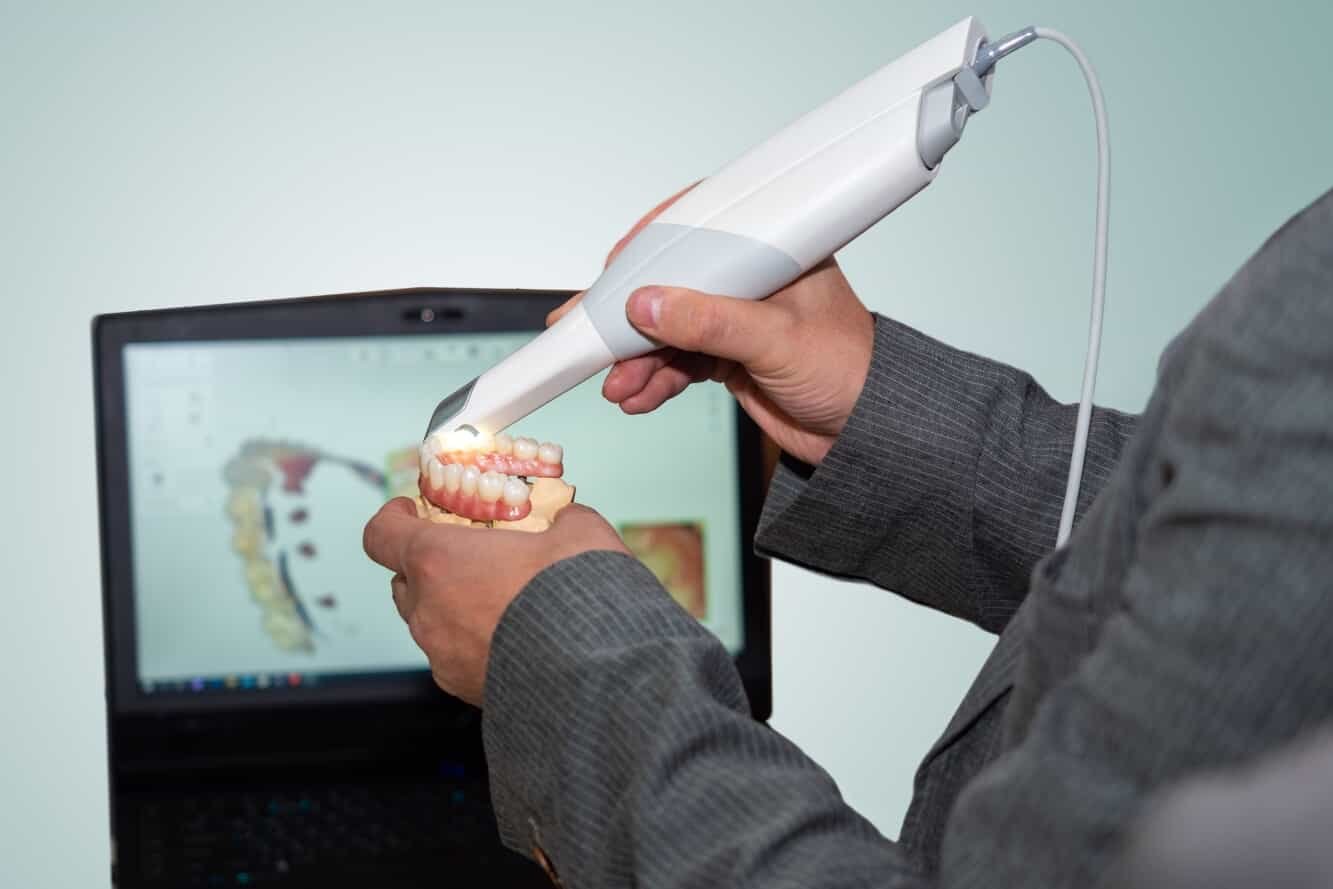
Factors for Selecting an Intraoral Scanner
Choosing the right intraoral scanner for your practice means selecting a model that aligns with your role in dentistry. Dentists, orthodontists, lab techs, clinic managers, and digital consultants have different needs when choosing an intraoral scanner. The features that make one TRIOS intraoral scanner ideal for one place may not be needed or useful in another.
For example, the scanners must deliver clinical accuracy and measurable return on investment for general dentists and clinic owners. A device that works well for many restorative, diagnostic, and cosmetic procedures offers clear benefits.
It reduces chair time and improves case turnaround. This results in both financial and clinical benefits. Speed and workflow integration are more important than special features, especially in busy settings.
Orthodontists and cosmetic dentists often focus on features like smile simulation, tools for patient engagement, and clear aligner options. These practices usually need scanners that capture accurate data. They also display this data in real-time. This helps patients see their results, which encourages them to stick to their treatment.
Dental labs focus on consistent scans. This is why they make purchasing decisions differently from general and cosmetic dental practices. Dental lab scanners prioritize consistency, surface detail, resolution, and compatibility with various file types, such as STL or PLY.
A lab tech must trust every scan. It should provide clear, high-quality data that works well with CAD/CAM systems.
This is especially true for labs that support many practices. They need flexibility and support for different formats. Often, they value these features more than portability and wireless design.
Procurement teams, clinic managers, digital consultants, and educators all have different views and priorities about intraoral scanners. The strength of the 3Shape TRIOS lineup lies in its ability to meet the unique needs of each group. This is precisely why this comparison guide is important when choosing a scanner for your practice.
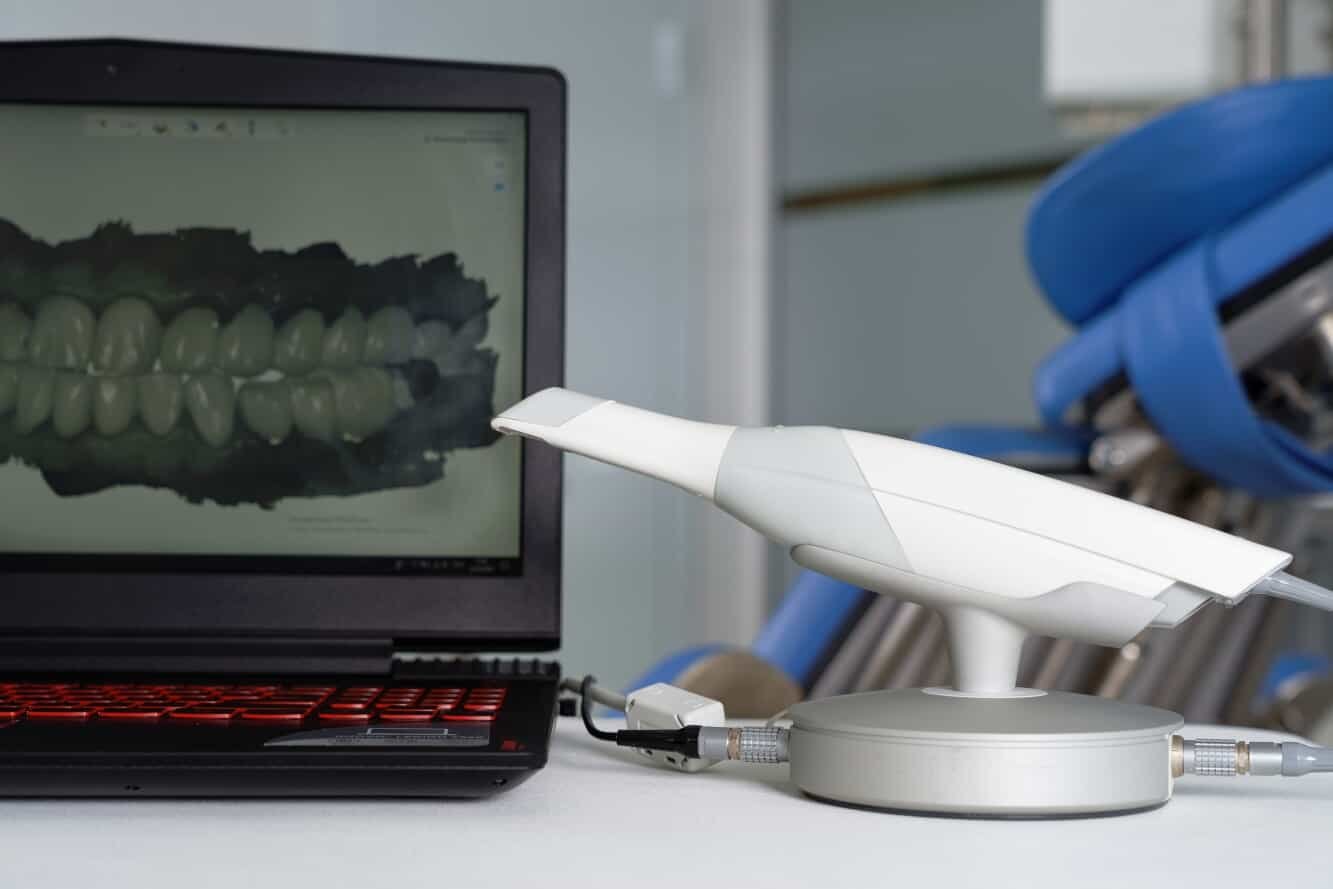
Benefits of 3Shape TRIOS for Dental Patients
Most scanner comparisons examine specifications, system compatibility, and features crucial to dental practices. However, it’s also key to understand the benefits for patients. The scanner experience impacts how patients see the quality of care. It also affects how confidently they proceed with treatment.
Fortunately, engineers designed 3Shape TRIOS scanners not only for technical excellence but also with patient experience in mind. Here are some of the biggest benefits of 3Shape TRIOS scanners:
- Comfort: The main benefit is comfort. It removes the need for traditional impressions.
These often use uncomfortable trays and cold materials. They can also cause gagging, especially when taking an impression of the upper arch. The TRIOS scanner replaces everything with a simple handheld device. It does not need any physical impression material for partial or full arch scans.
- Speed: Speed is another advantage noted by patients, especially those who have experienced traditional impressions. TRIOS scanners take detailed 3D images quickly.
This faster imaging means less time in the chair. It also reduces the need for retakes and the time spent waiting for impression material to set. This is particularly beneficial for high-volume practices, as faster imaging enables shorter wait times between appointments.
- Accuracy: Every scan taken with a TRIOS device creates a detailed model. This model accurately represents the actual condition of the teeth and surrounding soft tissues. This means that crowns, aligners, and prosthetics will fit more securely.
This leads to fewer remakes and return visits. It also reduces frustration for both the patient and the provider. The ability to get it right the first time has a real, tangible impact on treatment satisfaction.
- Better communication: Many TRIOS models feature tools that enable patients to view their own 3D scans on-screen in real-time. This is a significant shift in cosmetic and orthodontic procedures. It helps patients see changes, understand treatment goals, and feel more informed about their care. This transforms clinical conversations into collaborative experiences, which is much more pleasant for the clients.
- Fewer repeat visits: The increased accuracy, speed, and comfort lead to better outcomes, which significantly reduce the need for repeat visits. Digital scans are precise and resist distortion. This enables clinicians to plan and administer treatments more efficiently and with greater confidence. This leads to better outcomes and fewer unnecessary follow-up appointments.
3Shape TRIOS scanners serve not only clinicians but also people. These models help reduce sensory fatigue. Smaller scanner tips make them easy to use in tight spaces or with children. When your patients leave the chair feeling comfortable and confident, it reflects well on the whole practice.
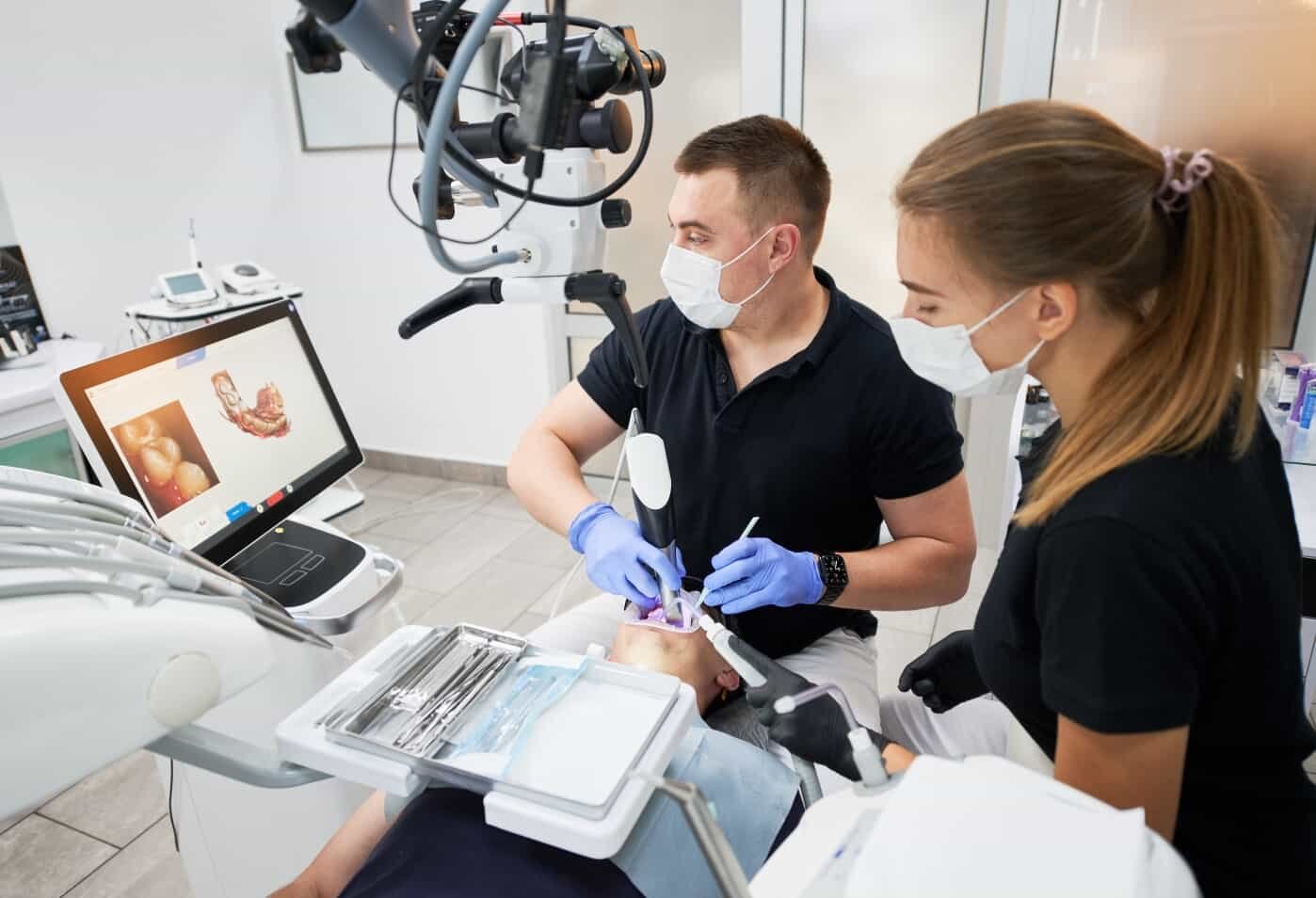
Side-by-Side Comparison Table: TRIOS 6 vs. TRIOS 5 vs. TRIOS 3 Wired
To make our 3Shape Trios Scanner comparison guide easier to understand, we created a simple table. This table compares each model in terms of the features that matter most to dental settings, including clinicians, labs, and managers.
While all three scanners deliver strong baseline accuracy, differences in design, software access, workflow support, and cost-benefit alignments do exist. The table below explores those differences:
| Feature | TRIOS 6 Wireless | TRIOS 5 Wireless | TRIOS 3 Wired |
| Scan speed | Ultra-fast | Fast | Moderate |
| Ergonomics | Sleek, optimized | Lightest model | Bulkier, older design |
| Battery power | Wireless, hot-swap | USB-C rechargeable | Wired-only |
| Accuracy | High | High | High |
| Software access | Full Suite (TRIOS Care) | Full Suite (TRIOS Care) | Limited, legacy access |
| Release year | 2024 | 2022 | 2015 |
| Ideal use case | High-end aesthetics | All-purpose clinical use | Entry-level or fixed-budget |
What immediately stands out is the generational leap between the TRIOS 3 and the newer wireless models. The TRIOS 6 improves on the TRIOS 5’s portability and ease of use. It introduces new features, such as Smart Scan Assist and enhanced rendering capabilities. These upgrades focus on high-performance practices that prioritize speed and patient engagement.
The TRIOS 5 remains the most balanced model. It keeps the wireless freedom and main features. It is also the lightest and most versatile model in the lineup.
The TRIOS 3 Wired model is still accurate. However, it shows its age in hardware design and software limits. However, it remains a reliable, cost-effective entry point for training centers or clinics with limited budgets.
However, this comparison table is just the beginning. The following sections will examine how each model operates in real-life scenarios. We will focus on usability, comfort, and features that benefit patients, promoting growth and customer retention.
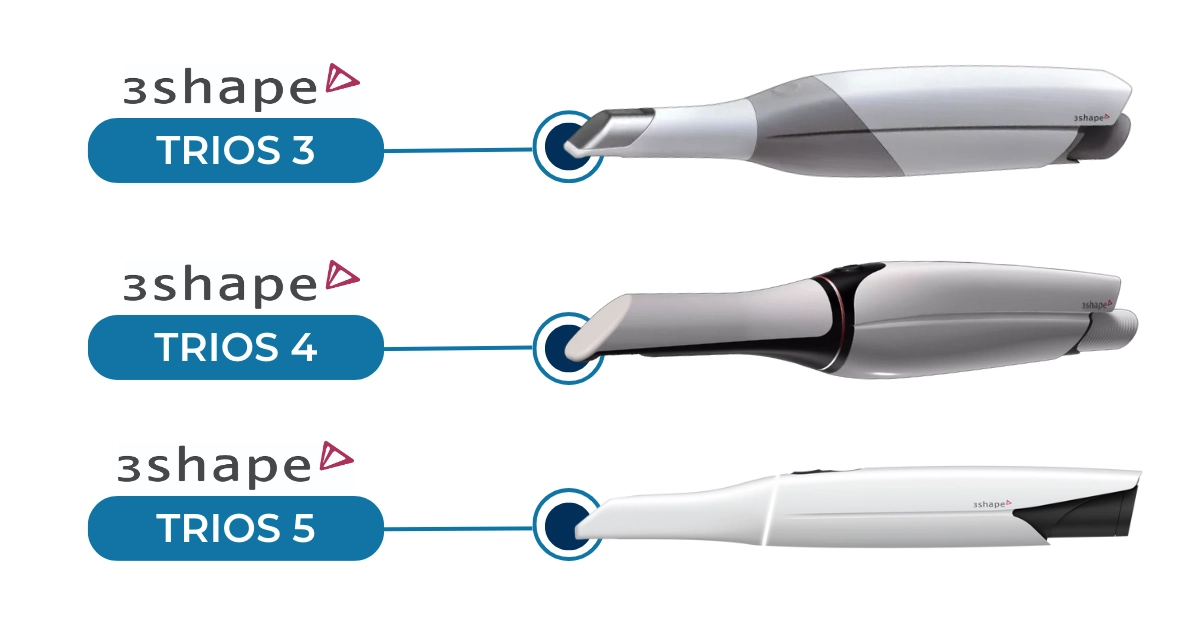
Performance and Usability Comparison
Beyond technical specifications, the day-to-day experience of using an intraoral scanner comes down to performance and usability. How quickly does it work in a live patient setting?
How intuitive is the interface? Does the ergonomics support long scanning sessions or quick operator handoffs? Here’s how each TRIOS model performs at the chairside and in the clinic workflow:
3Shape TRIOS 6 Wireless Scanner
The TRIOS 6 Wireless is the newest and most advanced scanner in the 3Shape lineup. It has an AI-powered Smart Scan Assist. This feature helps guide users while scanning. It reduces errors and improves efficiency.

The device takes high-speed scans and displays 3D models immediately. This is great for dentists during patient consultations. Especially useful for those planning restorations or cosmetic treatments, such as Invisalign. The scanner features an ergonomic design that’s refined, sleek, and built for both clinician comfort and patient trust.
The TRIOS 6 offers excellent responsiveness and clear visuals. It sets a new standard, especially for high-end prosthodontics and cosmetic practices. These practices depend on case acceptance and patient engagement to succeed.
3Shape TRIOS 5 Wireless Scanner
The TRIOS 5 Wireless holds a unique spot in the lineup. The lightest and quietest scanner made by 3Shape is this one. It features a straightforward power setup that utilizes USB-C charging instead of hot-swappable batteries.
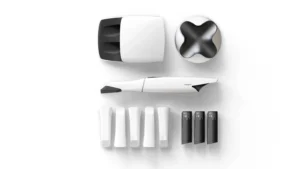
The device has Smart Calibration technology. This ensures consistent image quality over time. It requires no complex maintenance or technical support. In practice, the TRIOS 5 delivers rapid, accurate scans across a wide range of clinical scenarios.
Ideal for fast-paced general practices, ortho workflows, and hygiene departments where every second saved actually matters. It’s very well designed with both modern functionality and user-friendliness in mind.
The 3Shape TRIOS 3 Wired Scanner
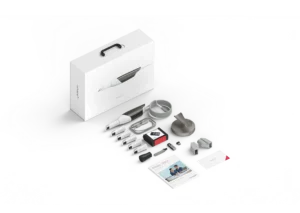
Despite showing its age in several usability areas, TRIOS 3 Wired remains a fully functional device. The main issue is the lack of wireless flexibility. This limits scanning positions and slows down workflows, especially in multi-chair setups.
Its accuracy is still high, but its interface and cart-based setup feel old. Newer models offer a smoother experience. Its software is more limited, and the hardware is physically heavier compared to TRIOS 5 and TRIOS 6.
It can still provide reliable scan data. Its autoclavable tips make it great for dental schools or clinics on a budget. It is a dependable scanner.
Pros and Cons
Each model in the 3Shape TRIOS lineup offers a distinct blend of speed and functionality. Understanding their differences can help you select the most suitable scanner for your clinical needs and business objectives. This section examines both the advantages and disadvantages of the scanners above.
TRIOS 6 Wireless
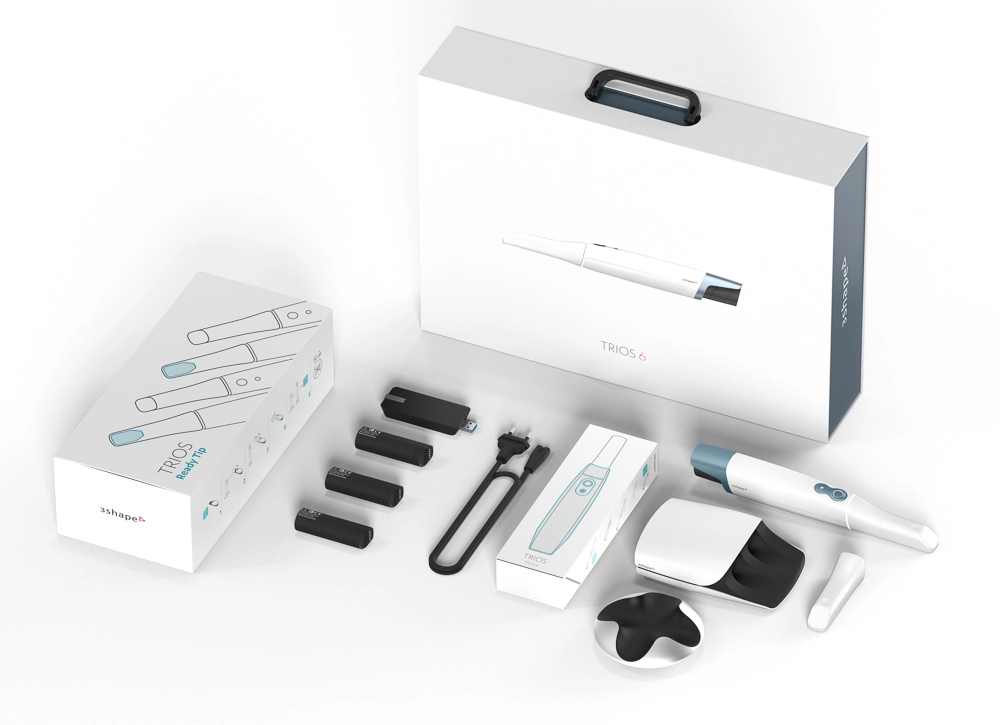
As the most advanced scanner in the lineup, the TRIOS 6 Wireless is built for speed, user comfort, and advanced patient engagement.
- Pros: TRIOS 6 Wireless has the fastest scan time in the TRIOS family. It includes improved AI tools to help with workflow. This makes it great for high-end prosthodontics, cosmetic dentistry, and multi-specialty practices.
- Cons: TRIOS 6 Wireless is the priciest model in the entire lineup due to its extensive feature list. However, it may also include features that are completely unnecessary for basic restorative or hygiene-focused practices.
TRIOS 5 Wireless
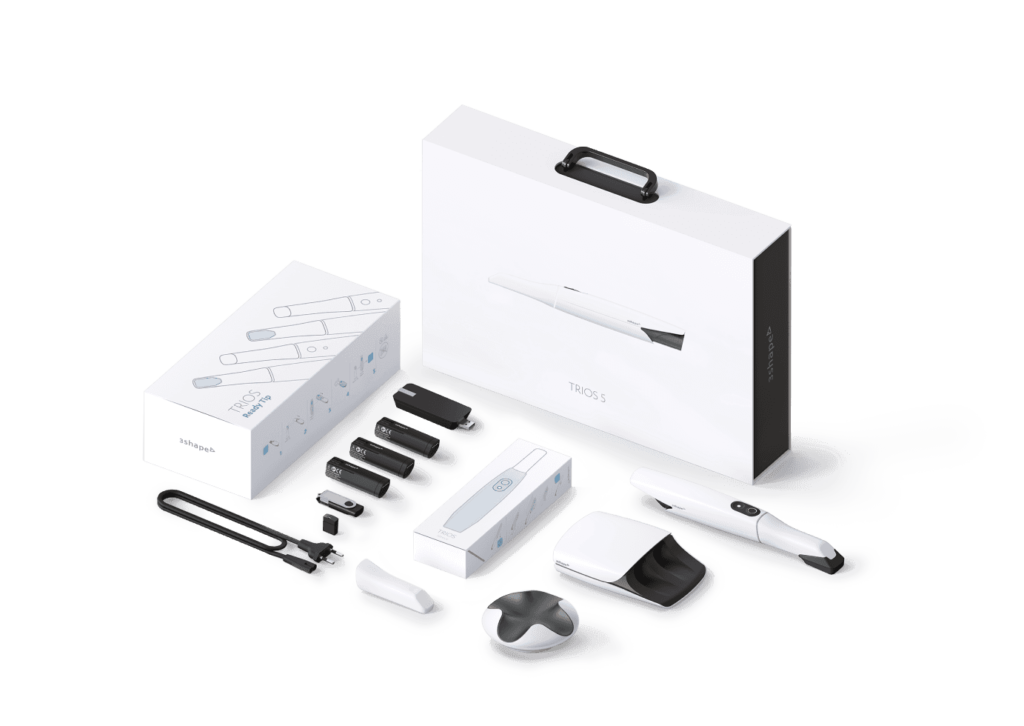
The TRIOS 5 offers a practical balance between innovation and accessibility. It is the lightest and quietest of the TRIOS scanners. It provides easy use and fast, accurate scanning for many treatments.
- Pros: TRIOS 5 Wireless offers a good balance of cost and performance. Lightweight and easy to maneuver, with USB-C charging that simplifies power management. It’s excellent for general practices, orthodontists, and high-volume environments.
- Cons: The TRIOS 5 lacks the AI assistance tools featured in the TRIOS 6 model and has a shorter battery runtime.
TRIOS 3 Wired
The TRIOS 3 wired scanner is a reliable model. It is still used in many dental schools and budget-friendly practices.
- Pros: TRIOS 3 is the most affordable option in the TRIOS lineup. It is accurate and proven in real-world clinical settings. It also works well with many lab systems. This makes it an excellent choice for training centers.
- Cons: The TRIOS 3 does not have wireless features. This limits its mobility and flexibility. It also has a bulky design and an old user interface.
Endnote
Choosing the right intraoral scanner ultimately involves matching its specifications and features with your practice’s real-world needs. The 3Shape TRIOS intraoral scanners have three different models. Each one can provide great digital impressions.
Choosing the right model is essential. It means more than just getting a tool.
To find the best 3Shape TRIOS device for you, consider Universadent. They are a supply company specializing in dental imaging equipment. Their products can help you detect, diagnose, and treat different oral conditions.
